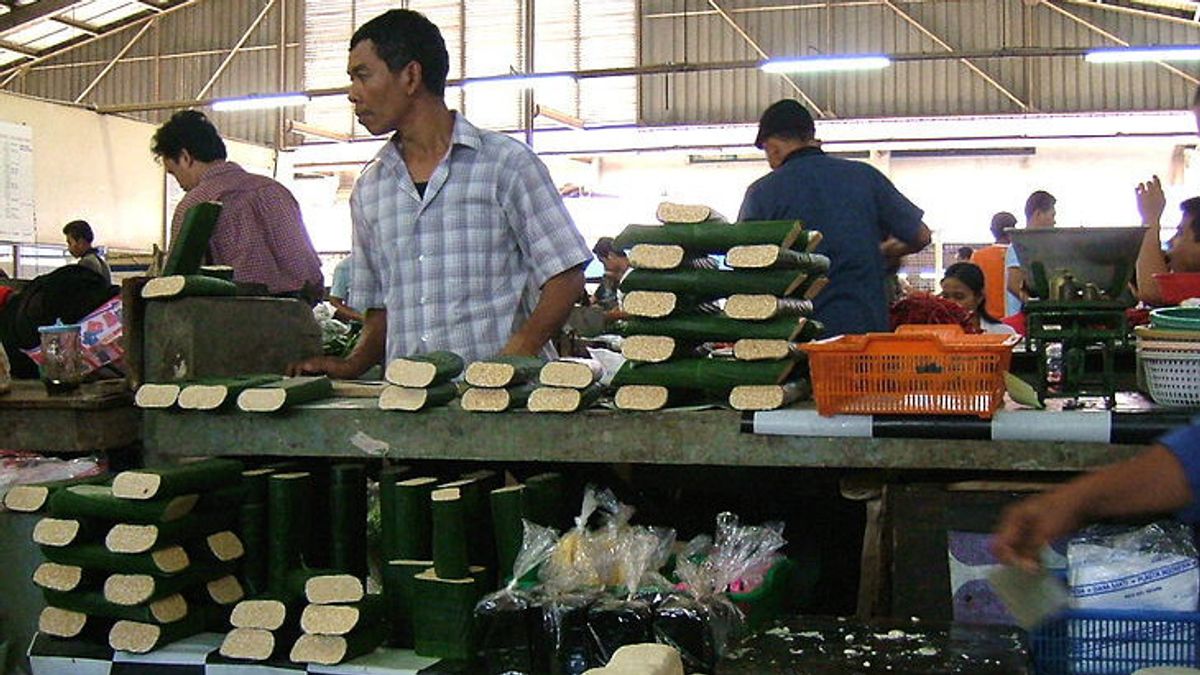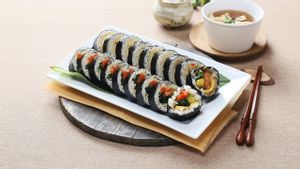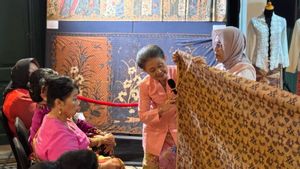JAKARTA - There is one food menu that is always present at the Indonesian dining table. Do not know rich and poor. Not without reason. Tempeh's passion as a nutritious healthy food menu that can be processed in a variety of cooking methods has made tempeh favored by all groups, even President Soekarno.
The mother of former fourth president of Indonesia Megawati Soekarnoputri, Fatmawati explained her husband's favorite food in a book entitled Fatmawati Notes Kecil Bersama Bung Karno (1983). He said:
Bung Karno always asked me to cook his favorite food myself, such as lodeh bamboo shoots, rendang, balado fish, pecel, fried tempeh, catfish sauce, hodgepodge, fried anchovies, yellow fish, pepes cassava leaves, and so on. .
In fact, another proof that Soekarno liked tempe was also written by his other wife, Hariyatie, through Hariyatie's book, Soekarno The Hidden Story (2001). From Hariyatie, who is actually Bung Karno's fourth wife, people can find out that her favorite food is "... empal, tempeh bacem, sayur asem, and chili sauce."
Therefore, the stigma of tempe as a food that is 'only' consumed by the middle to lower class is immediately erased. The prestige of tempeh, which has been so famous for a long time, has been increasingly lifted because it is often processed by housewives to chefs who work in famous restaurants.

Tempe history
Talking about tempeh, of course talking about its raw material, soybeans. Historian Ong Hok Ham wrote a book entitled Tempe Contribution of Java to the World (2000). Ong explained, the existence of soybeans, both in Europe and the archipelago, was known in the 19th century. That is, about one hundred to two hundred years ago. "Thus, tempeh, which is another product of soybeans, is thought to have been born in the 19th century as well."
However, if you look at the Bamboo Curtain Country, China, soybeans have even been known for five thousand years. Meanwhile, other soybean preparations, tofu, in the same country have been known for hundreds or maybe thousands of years. In fact, the German Dutch-Indies botanist, Rumphius, who is famous for his masterpiece entitled Herbanium Amboinense, had time to observe soybeans.
Rumphius argues that soybean plants, which are commonly called phaseolus niger (latin), kadele (Java), zwartee boontjes (Netherlands), and authau (China), give the fact that the Chinese do not process soybeans into tempe, but process the black soybean seeds into flour. as an ingredient of tofu, and laxa or tautsjian, flat noodles.
It can be glimpsed from the peanut in Chinese called duo (tao). That is why people often hear processed nuts products with Chinese pronunciations starting with tau. For example, tauchu (taoco), tau-hu (tofu), touya (toge), touzi (tauci).

Through Rumphius we have become well-known about soybeans in China. However, tempeh was never produced there. Why not, tempeh is a native food from Java which was discovered by accident. Therefore, it is natural that the case of who invented tempeh, is similar to other foods in the world that are often anonymous.
However, most of the narratives of tempe discovery are closely related to tofu production in Java. In this case, because both are made from soybeans. Tofu is made from cream or soy milk soaked in water for hours under a certain temperature.
Meanwhile, making tempeh as reviewed by Encyclopaedia van Nederlandsch Indie (1922) is said to be a 'cake' made from soybeans through fermentation and is a popular food (volk's voedsel).
Poor stigma
Because it is so rich in protein and nutrition, tofu and tempeh are often referred to as 'meat from agriculture' by nutritionists. The nickname makes the two foods the food that saves people from low-income countries, ranging from those who fall into the category of poor to rich.
The presence of soybean processing innovations, according to historian Ong Hok Ham, is based on the density of the population. Allegedly, based on that density, the art of cooking is affected. Indonesia for example, which in the 19th century began to feel the density of the population, so that Java occupies the most densely populated island in Southeast Asia.
Problems also arose when colonial plantations began to open massively and narrowed the forest area as a place for animals as a source of protein to grow and develop.
Not to mention, the matter of forced cultivation with farmers as coolies, reduces hunting, livestock, and fishing opportunities. Like it or not, the Javanese menu is mostly meatless. This condition makes processed soybeans, both tofu and tempeh, have a very vital function, namely food to save the health of the population.
Based on that fact, until now the narrative that has flourished is the stigma of tempe as an inferior food, as if tempe was only reserved for people with lower middle-class economies. In fact, it has been clear that the specialties of tempe have been echoing since 1980. At that time, tempe was already recognized by the world. This was revealed by Kompas journalist Agnes Aristiarini in his writing entitled Majizat Tempe for Equality (2000).
"The specialty of tempe, which has been known since the mid-1980s, has actually made people in various countries such as the Netherlands, America, Japan, Malaysia and Singapore consume tempe as a diet food," said Agnes.
He also expressed his opinion that tempe can improve the country's economy. The origin of the tempe industry must be addressed from upstream to downstream first. Starting from the standardization and sanitation of raw materials, the production process, the political will of policy makers, to a bridge between industry and scientists.
Unfortunately, until now tempe production is still a small industry, most of which are still familiar with old school technology. In fact, tempeh can speak volumes in order to fulfill the nutrition of all Indonesian people. Finally, to realize that Indonesia can make tempe go global, it would be good to hear back from Ong Hok Ham's comments.
"Therefore, (this country) needs self-sufficiency in soybeans, more than rice."
The English, Chinese, Japanese, Arabic, and French versions are automatically generated by the AI. So there may still be inaccuracies in translating, please always see Indonesian as our main language. (system supported by DigitalSiber.id)









